In August 2013, American actor Ben Affleck was announced to portray Bruce Wayne/Batman in a live action film pitting the two iconic DC superheroes, Batman and Superman, against each other.
Affleck’s casting was initially met with negativity, comparable to Michael Keaton’s casting as the character in Tim Burton’s Batman.
However, much like Keaton, Affleck has come through in flying colours, perhaps defining Batman better than anyone else in live-action.
Ben Affleck’s version of Batman is fully formed with a 20-year career under his belt.
It goes a long way in defining him as a character.
It makes him the most ferocious, skilled and experienced Batman we have ever seen in live action.
This Batman has somehow managed to maintain the aura of an urban legend, having never been photographed by the press or members of the public.
And in contrast to Christian Bale’s Dark Knight, Affleck’s incarnation regards Batman as a permanent part of his persona.
He’s committed to the job and isn’t interested in hanging up the cape and cowl any time soon.
However that doesn’t make him a happy person.
Two decades into his role there is no end in sight, and if anything, it’s only getting started.
After Superman and General Zod clashed during Man of Steel’s destructive battle of Metropolis, we are told via the tie in novel Cross Fire the criminal element fled to Gotham in droves, making Batman’s war on crime that much more demanding.
“He’s projecting in some ways his own sense of failure, his own sense of disillusionment, his own cynicism onto Superman, having at one point been certainly much more idealistic about what he was doing.”- Ben Affleck, Batman/Bruce Wayne, Entertainment Weekly.
However he is more than up to the task.
Affleck’s Batman moves from opponent to opponent with frightening speed, putting each foe down with such force the environment falls away upon impact.
The fight sequences mix the brutality of Frank Miller’s acclaimed graphic novel The Dark Knight Returns, along with the high speed free flow combat of the Arkham video game series.
This makes for the most visually impressive Batman in live action, and importantly, presents someone who could conceivably take down a superhuman.
We can also clearly see what is happening during combat, and people do not fall over for no apparent reason.
Criminals go down because Affleck’s Batman puts them down.
Wearing brass knuckles, the welfare of the criminal is not considered in the slightest.
This is a Batman who has lost patience with the criminal element with his methods becoming darker than ever.
As Alfred himself puts it, a good man has turned cruel.
This Batman brands the worst of the worst with a bat emblem, which equals a death sentence in prison.
Going with this hard line of justice, goons are also mowed down via Batmobile and Batwing gunfire, much like Michael Keaton’s Batman.
At one point in the film, Bruce states he and Alfred have “always been criminals”, justifying the ferocity of his behaviour.
This is also a Batman who makes a dramatic entrances by gliding through windows, just like his comic counterpart.
Another sequence sees Batman hiding in the corner of a room like an old-fashioned horror monster, eliciting a panicked response from a young police officer who frantically fires his weapon in Batman’s general direction.
Such is the intimidation factor; a group of people Batman saves keeps a gate firmly shut, leaving themselves imprisoned, because the ‘demon’ is still inside the building.
Affleck’s Batman also speaks in a demonic, synthesized voice which successfully masks his identity.
It allows him to be threatening to the criminal element without becoming subject to parody.
“Now Batman is going to fight the way I’ve always dreamed seeing him fight… he’s a character so prepared in martial arts that you can do a lot of things with him, but filmmakers usually don’t go all the way with it.”- Guillermo Grispo, fight choreographer, Los Andes Diario.
As you may have already guessed, the two most dominant comic influences come from The Dark Knight Returns, along with Kingdom Come.
Those stories feature an older version of Bruce Wayne who has become even more world weary and intense.
Just as in Kingdom Come, Affleck’s Batman mostly resides inside the batcave - embracing his nocturnal alter ego with vigor.
Wayne Manor, again, like Kingdom Come, has fallen into a state of disrepair with Bruce simply abandoning it.
Bruce’s childhood home therefore becomes an even sadder, haunted place with the glory and grandeur of yesteryear long gone.
His parent’s crypt on the grounds further conveys this gloomy and doomed vibe.
The grounds are also surrounded by weeds, perhaps visually commenting on the crime situation in Gotham City.
Affleck’s batcave is accessed via a house close to the old manor, on the shore of a nearby lake.
Interestingly, this house is made out of large glass panes held in place by dark metal.
This is a clever visual juxtaposition to the dark, secretive lair that lurks underneath, suggesting there are no secrets to be found here.
We of course know the opposite to be true.
With a dark, damp aesthetic associated with a cave, married with a space protected from the elements, this batcave represents the best of both worlds.
And again, much like this interpretation of Batman, the cave is fully established and has seen its fair share of action over the course of the 20-year journey.
What’s even better is Affleck’s Bruce, along with his right man Alfred Pennyworth, create and maintain all their own equipment and vehicles.
Items are not given to him on a silver platter.
This war on crime is self sufficient and stored under one roof.
“He’s also always been kind of a dark guy. You can’t go out at night and avenge crime the way he does, obviously, without a darker view of the world, but you can see that this probably contributes in some degree to the greater cycle of violence.” - Ben Affleck, Batman/Bruce Wayne, Entertainment Weekly.
A clear visual influence from The Dark Knight Returns is the armoured suit Batman wears to battle Superman in the rain.
The standard black and grey suit also strongly evokes The Dark Knight Returns, and it becomes the most comic accurate bat suit in live action.
It allows Affleck’s impressive physique to be exemplified, rather than just the technical details of the suit.
In 1989, director Tim Burton revolutionized the character by opting for a black bodysuit.
In Dawn of Justice, director Zach Snyder has revolutionized the character again in a way, by shaking up that trend.
Also inspired by The Dark Knight Returns is Batman mourning the death of Robin at the hands of the Joker.
Robin’s old vandalized suit is displayed in a case within the batcave, serving as a constant reminder of the tragedy Batman was unable to prevent.
The death of Robin has never been touched upon before in the live action Batman franchise, and it offers a welcome addition to Bruce’s torment other than just his parent’s murder.
Importantly, it serves as a recent heartbreak.
Something significant, which has occurred during Batman’s crime fighting career and not before it.
“He’s bitterly disappointed in the past that he’s lost this guy who fought by his side. That character’s death must have been devastating to him, and he’s suffered. We get the sense that he’s suffered a lot of devastating losses before this movie even starts.”- Ben Affleck, Batman/Bruce Wayne, Entertainment Weekly.
However we thankfully do witness the murder of Thomas and Martha Wayne in the film, properly establishing the very roots of this new Batman.
Just like the comics, Bruce’s parents are gunned down after watching a movie in Gotham City.
Just like the original 1939 depiction of the murder, Thomas Wayne fights back against the mugger shortly before shots are fired.
Tie-in material states the gunman was never caught, leaving the murder an unsolved case.
This is a clear improvement in my eyes, further driving Bruce's crusade and offering another clear point of difference to the Christopher Nolan Batman trilogy, which presented the exact opposite scenario - the gunman was identified, caught and later killed following a trial.
In the new DC shared universe, Batman remains an angry boy who still clings onto the remote hope he may run into the mysterious boogeyman who ended his childhood.
As shown during an impressive opening credits sequence, Bruce seemingly remembers being lifted up off the ground by a swarm of bats, ‘saving’ him during a dark time in his life.
Pleasingly, we also are treated to a sequence in which Bruce Wayne pays tribute to his parents at their graves, something that had been lacking in live-action Batman films up to this point.
One of these sequences is actually a nightmare Bruce awakes from during the night in which blood pours from the crypt, with a bat charging its way through to stare Bruce directly in the face.
This proves Bruce remains deeply scarred by the incident all these years later, even though he is now older than his father ever lived to be.
The appearance of the bat in the nightmare also confirms Bruce’s subconscious memory of the bats saving him during a dark period in his life.
"I think the idea of justice has a very personal meaning to Bruce Wayne because of his parents being murdered when he was young, and that’s the defining issue of his life – this terrible injustice that happened and the desire to avenge it. And so, when he talks about justice, that’s not abstract or theoretical – he takes it personally, and that’s why he takes the fact of Superman (existing) personally.” Ben Affleck, Batman/Bruce Wayne, Batman v Superman official movie magazine.
Affleck’s Bruce Wayne is not a complete shut-in.
He has the aura of a big name celebrity while still being respected by society at large.
Affleck plays this part of the character with ease.
The social side of the character is a vehicle for his nocturnal alter ego, who remains at the forefront of his personality.
Be it attending a function to download confidential data, or attending a cage fight to track a terrorist’s mobile phone, Bruce’s mind is always on the mission.
He is also the chief executive of his business, seemingly taking on a more hands on role and feeling responsible for the welfare of his people.
This differs to Christian Bale’s Bruce, who fostered the reputation of a clueless, uninterested jerk.
Tie-in material states Affleck’s Bruce chartered a successful new direction with his company upon taking the reigns, however he is not without competition.
LexCorp is a rival business run by Lex Luthor.
This is a clever contrast, in that Lex is a young entrepreneur against the older man who, while he inherited his fortune, has successfully run his business for quite some time.
Another addition to Affleck’s Bruce is how he appears tired and weary during scenes, as the character would from staying up late on a regular basis due to his crime fighting commitments.
This element has not been touched upon before to this extent in the films and is very much welcomed.
He also has stubble, much like the comics, furthering highlighting the late night warrior vibe.
“We also play a bit more with the billionaire playboy side of the character. He lives that life at full tilt. He courts many women, owns many cars, and parties a lot. He does that as a way to fill the void in his soul. Moreover, past incarnations dealt with a straightforward search for justice. This time, Batman’s reasoning is clouded by frustration, bitterness and anger.” - Ben Affleck, Batman/Bruce Wayne, Entertainment Weekly.
Going with the heavy-duty representation of Batman, Affleck’s Bruce is very much an alpha male who refuses to take a backward step in any facet of his life.
He condescendingly tells Clark Kent “don’t believe everything you hear, son”, jokingly ponders if he in fact owns the Daily Planet and smugly smiles after his verbal beat downs.
Batman has control freak tendencies, and because of this, he views Superman’s arrival onto the crime-fighting scene with suspicion.
Bruce states to Alfred very few ‘good guys’ are left, and if there is a one per cent chance Superman is their enemy, or could become one in the future, they must take him down.
And make no mistake, like the best Batman stories, it’s personal.
Bruce was present during the battle of Metropolis, witnessing the destruction of his Wayne Financial building.
As a result, many of his employees died.
One scene in particular sees him saving a young girl who has recently become an orphan just like him.
It is his sense of powerlessness, which drives his crusade against Superman.
In many ways, Batman feels superseded, with his darker methods compensating for this sense of weakness.
So much so, Affleck’s Bruce has nightmares - or they could also be a potential future he has glimpsed.
In a post apocalyptic setting, Bruce witnesses Superman ruling Earth with an iron fist, with only a small band of people defying his decree.
Batman is eventually captured and held prisoner by the Kryptonian, and at his complete mercy, Batman is chained up and unmasked.
Bruce wants the exact opposite of this scenario to play out in reality.
And in true Batman fashion, he doesn’t tell anybody about this vision, preferring to keep it a secret, weighing up any future action he may take himself.
The secretive nature of Batman is also emphasized with Bruce lying to Alfred about the shipment of a dirty bomb into Gotham City.
In reality, a shipment of kryptonite, which is lethal to Superman, is being brought into town, and Bruce plans on stealing it for his own purposes.
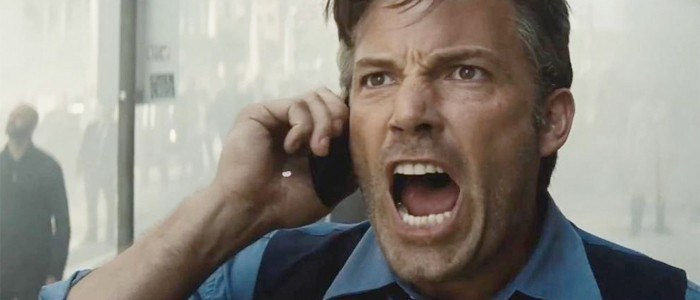
“Here, you’re dealing with an older version, a guy at the end of his journey. He’ll find meaning in his own life during his conflict with Superman. He really thinks Superman is an existential menace, and he believes destroying him will be his legacy.”
This Batman is a single-minded reign of terror, and this is exemplified in his hunt for the kryptonite shipment.
He uses the rugged Batmobile as a weapon, dragging vehicles behind him like rag dolls, machine gunning and exploding anyone who dares get in his way, and driving through brick walls as if they were paper.
The new Batmobile blends Anton Furst’s art deco design from 1989’s Batman with The Dark Knight Trilogy’s rugged all terrain Tumbler.
It is a successful fusion of eras while still managing to forge its own identity.
Ultimately, Superman gets in Batman’s way and brings his kryptonite chase to a premature end, but this does not stop the hunt.
A pre-fired GPS tracker shows the shipment was delivered to Lex Luthor, and shortly after, Lex’s building is war zone of shattered glass with men being carried away in stretchers.
Batman has stormed in, taken the prize and left one of his signature batarangs behind as a smug taunt, which is a trademark of this incarnation.
Upon obtaining the kryptonite, Batman forges a kryptonite spear and kryptonite grenades to take down Superman, again showing a hands on approach to gadget and weapon development.
The fight itself logically presents how a Batman and Superman encounter would play out.
The fully powered Superman throws Batman around with ease, with even a slight touch sending Batman flying backwards.
But a weakened Superman has Batman ruthlessly dominating with his martial arts skills.
After two rounds of kryptonite grenades are fired, Batman stands over his defeated foe and prepares to deliver the coupe de grace.
The utterance of ‘Martha’, Superman’s adopted mother’s name, freezes Batman in his tracks, flashing him back to his own mother, also named Martha.
This is the first time Batman views Superman as a fellow human being with family and friends who also love him.
The two then set aside their differences and team up to fight a common enemy – Lex Luthor.
"It inspires in him the idea that well, if there’s one of these kinds of people out there, then maybe there are in fact more. If there are more, then maybe that’s hopeful and also terrifying to him, because then they could make humans even more powerless — or they could serve on our side." - Ben Affleck, Batman/Bruce Wayne, Entertainment Weekly.
Dawn of Justice is very much a case of be careful for what you wish for.
During the film, Batman focuses his disillusionment and anger onto Superman, seeking to destroy him.
However at the end of the film, the pair fight together on the same battlefield.
Superman sacrifices himself to stop Lex Luthor’s rampaging creation, Doomsday, from destroying large sections of Gotham and Metropolis.
Along with Robin, the death of Superman adds another emotional toll onto Batman’s psyche.
Batman realizes super powered beings like Superman are now necessary to fight equally powerful threats.
Batman knows he cannot save the day on his own anymore, and requires help.
This represents a character growth.
Bruce must become more trusting, even if it goes against his secretive and skeptical personality.
As a result, he will help seek out other super humans, and this represents a new dawn for crime fighting.
The end of the film features Batman visiting Lex Luthor in prison, and suggests Batman has curtailed his violent tendencies.
The Dark Knight declines the opportunity to bat brand the young madman, which would equal a prison death sentence, and instead slams his brand onto a wall beside Lex.
Superman has possibly led Batman to reflect on his recent violent behaviour, inspiring him to become a better person.
Batman v Superman: Dawn of Justice presents the beginning of an exciting new chapter in the live action portrayal of the brooding vigilante.
With Ben Affleck behind the cowl, the future looks bright.
comments powered by Disqus

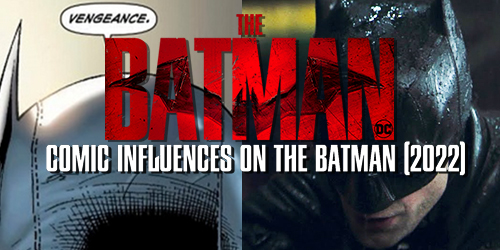
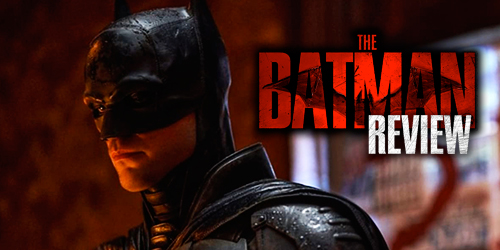

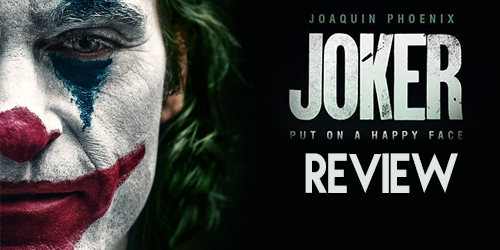
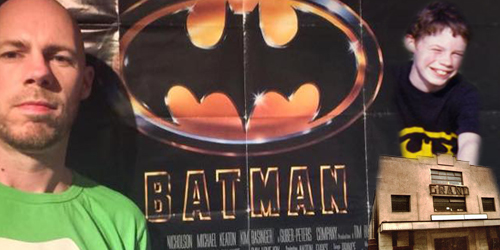



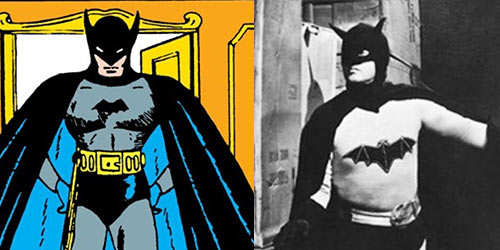

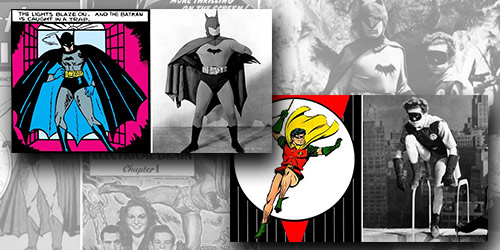
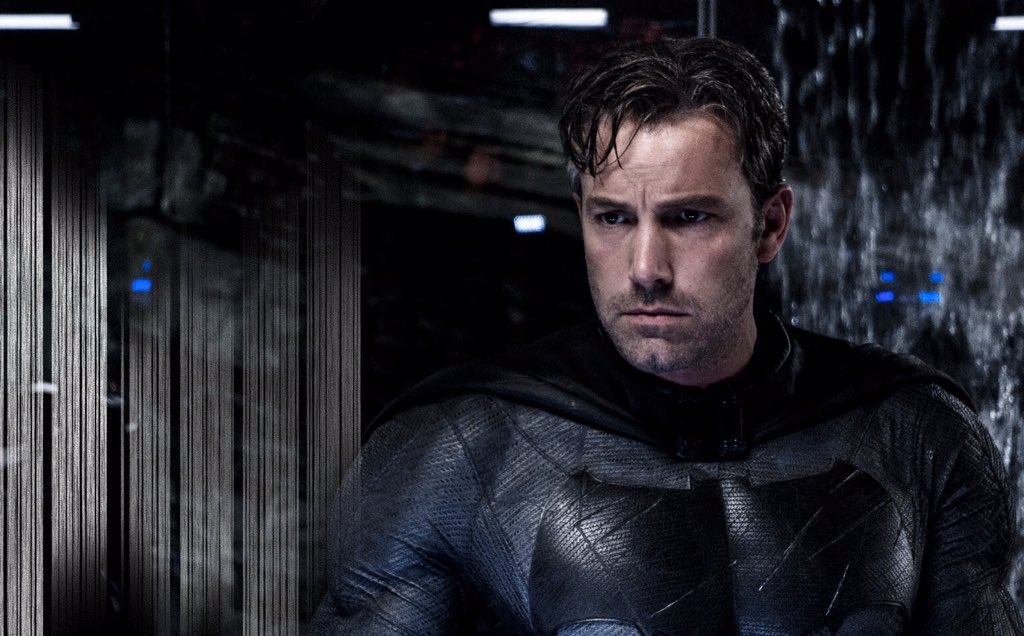
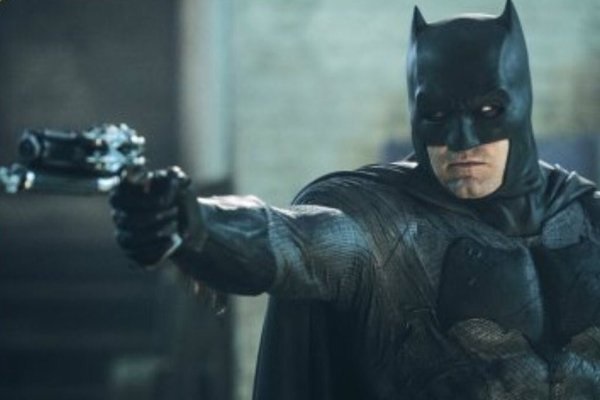
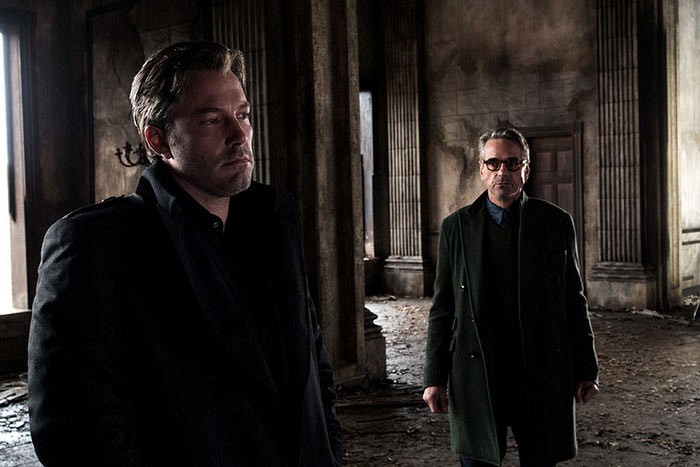

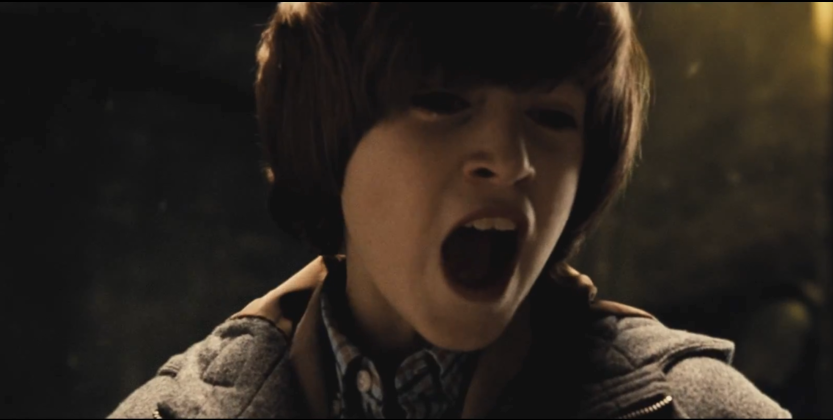

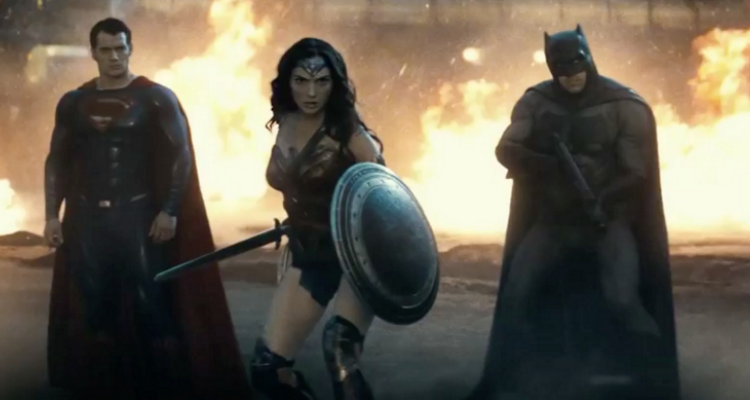
by Kamdan
by thecolorsblend
by The Laughing Fish
by The Laughing Fish
by The Laughing Fish
by The Laughing Fish
by The Laughing Fish
by The Laughing Fish
by The Dark Knight
by The Joker